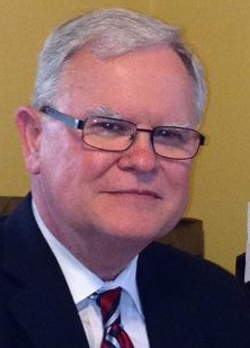Myth vs. Fact: Just How Complex and Costly is Radio Advertising? by Duane Alverson, President – MacDonald Broadcasting Co.
 By Duane Alverson
By Duane Alverson
President of MacDonald Broadcasting Company
Is advertising on the radio intimidating to you?
After 30 years in the radio business, I can’t tell you how many times I’ve heard business owners express concerns when it comes to advertising on the radio.
“I don’t have the creative resources or ability to produce an ad.”
“I don’t have a media planner.”
“My ad has to be as polished as the big brands’, right?”
“We can’t afford to advertise on the radio!”
Ok. Radio can be intimidating for many business people. But it doesn’t need to be. Advertising on the radio is often made out to be far more complex than it is. Of course, the more complex anything is viewed, the more likely an expert needs to be involved, right? Well, yes and no. Let me explain…
It’s Easier Than You Think. More Affordable, Too!
When it comes to producing killer creative for a radio campaign, you really should rely on your local radio stations and the hired creative guns. Writing and producing commercials that produce results is not for amateurs.
But what most don’t realize is that the creative is generally included in the purchase of airtime, so there’s no added cost to you to rely on those who have been there before. Most radio stations have extensive experience when it comes to crafting results-generating radio commercials. Don’t let the thought of having to write your own commercials hold you back from taking full advantage of one of the most powerful advertising mediums available to you and your business.
Furthermore, radio is “The Great Equalizer.” That is to say: on radio, you “sound” just as big as the box store or national chain. This levels the playing field if your small independent business is competing with the national big boxes. This isn’t nearly as easy a feat to pull off when advertising on television, in print (or on digital screens, for that matter!). In fact, it can be pretty difficult to compete against professionally produced T.V. commercials, which likely cost more than what you spend on advertising for the entire year.
Scheduling radio is also blown out of proportion, made out to be super complex, and in need of a professional media planner. Fact is, most radio schedules can be determined by a grade school math calculation. Here it is:
• Take a radio station’s cumulative audience (total weekly audience M-Sun 6a-12m) and divide it by the station’s AQH audience (average number of people listening in a 15-minute time frame M-Sun 6a-12m).
• Take that number and multiple it by 3.29 (constant) to determine how many commercials per week you need to run on any station.
Example: 50,000 cumulative, divided by 3000 AQH = 16.7 x 3.29 = 55 commercials per week. Or, if you want to skip all the math, just run 8 to 10 spots a day for as many days per month your budget allows.
Mon Tue Wed Thu Fri Sat Sun
6a-10a 2 2 2 2 2 2 2
10a-3p 2 2 2 2 2 2 2
3p-7p 2 2 2 2 2 2 2
7p-12m 2 2 2 2 2 2 1
Most radio campaigns come up short because of too few commercials — not too many.
Does Radio Advertising Cost, or Pay?
Finally, there’s the debate over costs. How do you determine what’s expensive, what’s affordable, or what’s a great deal? Not just with radio, but with any product or service for your business. It’s all relative, right?
When radio produces results, it’s viewed as a bargain. When it doesn’t, it’s viewed as expensive — no matter how great of a deal you thought you were getting. Do this simple exercise: Put a number in your head for what you think a typical radio spot costs. Then call your local radio station to find out the real number. The affordability of radio just might shock you!
We see too many people buying the biggest audiences in town but with the weakest possible schedules due to budget constraints. They cut back on the number of commercials per week and, before they know it, they are trying to put out a house fire with a garden house.
Keep in mind: radio is a frequency medium. Don’t water down your schedules because of costs. Instead, buy smaller audiences and run dominate schedules. Investing $400 a week on a small audience may generate more results for you than $1,500 a week on the largest.
The models for success on the radio are pretty darn simple. Getting people to use them is the complex part.
Duane Alverson is president of MacDonald Broadcasting Company, based in Saginaw, Mich., and the MacDonald Center for Marketing Excellence, two mid-Michigan organizations assisting businesses demystify traditional and digital advertising. He can be reached at (989) 754-5621.



Leave a Reply
Want to join the discussion?Feel free to contribute!